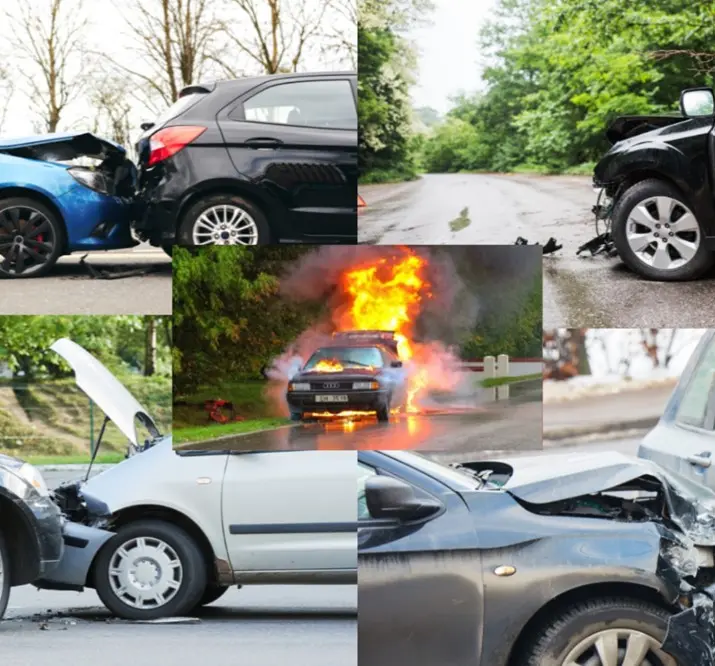The open road, while offering freedom and convenience, also presents inherent risks. Understanding the most common types of car accidents and how to stay safe is paramount for every driver, regardless of experience. By gaining awareness of these prevalent scenarios and adopting proactive safety measures, we can significantly reduce the likelihood of being involved in a collision.
Below are some of the frequent types of car accidents:
Rear-End Collisions
One of the most common types of car accidents is rear-end collisions. These incidents often occur when a vehicle fails to maintain a safe following distance or fails to react in time to sudden braking. Distracted driving, such as texting or adjusting the radio, is a significant contributing factor.
To mitigate the risk of rear-end collisions, always adhere to the “three-second rule” by choosing a fixed object ahead and ensuring at least a three-second gap between the vehicle in front of your vehicle. In bad weather conditions, increase the following distance. Pay constant attention to the road and avoid any activities that divert your focus. Anticipate potential hazards and brake smoothly and gradually to give drivers behind you ample warning.
Intersections are another hotspot for car accidents. Collisions at these junctures frequently result from drivers running red lights or stop signs, failing to yield the right of way, or making improper turns. To stay safe at intersections, always approach with caution. Even if you have a green light, scan for traffic before proceeding.
Never rush through a yellow light; instead, make a safe stop if possible. When making turns, use your turn signals well in advance and ensure the lane is clear before maneuvering. Be particularly vigilant for pedestrians and cyclists who may be present. Defensive driving at intersections is crucial for preventing serious accidents.
Single-Vehicle Accidents
While collisions involving multiple vehicles are frequent, single-vehicle accidents also constitute a significant portion of incidents. These accidents often involve a driver losing control of their vehicle, leading to crashes with stationary objects like trees, poles, or guardrails, or even rollovers. Factors contributing to single-vehicle accidents include speeding, driving under the influence of alcohol or drugs, driver fatigue, and distractions.
To prevent these types of accidents, always drive within the posted speed limits and adjust your speed according to road and weather conditions. Never drive when you are tired or under the influence of any impairing substances. Ensure your vehicle is well-maintained, especially the tires and brakes, as these play a critical role in vehicle control.
Side-Impact Collisions
Side-impact collisions, also known as “T-bone” accidents, typically occur at intersections or when changing lanes. These are particularly dangerous due to the limited protection offered on the sides of a vehicle. Failure to check blind spots is a primary cause of these accidents.
Before changing lanes, always check your mirrors and physically turn your head to look over your shoulder to ensure the adjacent lane is clear. Be aware of other drivers’ intentions and anticipate their movements. When driving through intersections, be mindful of cross-traffic and ensure it is safe to proceed before entering.
Head-On Collisions
Head-on collisions, though less frequent than some other types, are often the most severe. They typically occur when a driver veers into the opposing lane of traffic. This is caused by distracted driving, drunk driving, drowsy driving, or attempting to pass unsafely.
To avoid head-on collisions, always stay focused on the road and avoid distractions. Never drive under the influence of alcohol or drugs, and pull over if you feel fatigued. When passing, ensure you have a clear line of sight and sufficient time and space to complete the maneuver safely.
Understanding the most common types of car accidents and how to stay safe empowers drivers to make informed decisions and adopt safer driving habits. By practicing defensive driving techniques, remaining attentive, and respecting traffic laws, drivers contribute to making roads safer for everyone.
Also Read-Selecting the Right Tech Stack for Mobile App Success










